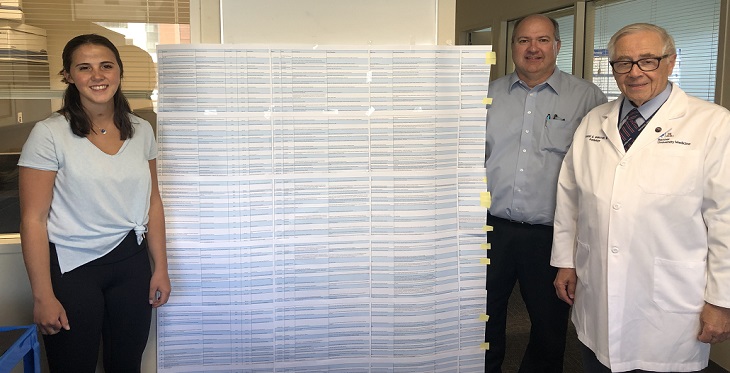During the eleven weeks I worked for the Arizona Telemedicine Program (ATP) this summer, Dr. Ronald S. Weinstein, director for the ATP was fond of telling me that the most rewarding aspect of a summer research project was having the opportunity to publish a paper at the end of it. While I hesitate to argue with one of the most influential leaders in telemedicine, I have to say that being able to truthfully and unironically add “Proficient in Microsoft Excel” to my resume probably tops my list, for now. But in all seriousness, my summer spent building a portfolio of the telehealth-related research projects funded by the Patient Centered Outcomes Research Institute, (PCORI) and being thrown head-first into the world of scientific research and academic literature that I had only imagined during my first year of college in St. Louis, turned out to be one of the most transformative experiences of my admittedly, young life.
As an Anthropology minor, I’ve spent the last year questioning what direction I wanted my future career in medicine to take – something that addresses disparities in access to care, its quality across location and demographic population, and social determinants of health. It seemed to be an almost perfect coincidence that I found myself in Dr. Weinstein’s office at the end of May, unsure of what I was getting myself into, but thrilled to be there, nonetheless, and discovering that I was about to spend the next two months analyzing research projects that focused exactly on the healthcare issues that mattered most to me.
Having the opportunity to learn about intervention science, the nuances of implementing effective change strategies to unique cultural contexts and settings, and the power of telemedicine to connect people to the healthcare resources they need, through the construction of the PCORI research project database and portfolio, gave this eager little pre-med student her first taste of taking on a challenge both interesting to her, and important to the greater population at large.
Working for the ATP this summer opened my eyes to more than just the fields of intervention science, telemedicine, and the whole complicated world of grant applications and research funding. It gave me a platform to demonstrate my own passions and skills that I had only started to develop in college the year before. For the first time, I wasn’t spending hours constructing the perfect Excel spreadsheets and graphs, and analyzing research results solely for a grade in a class, but with the hopes of discovering something meaningful about PCORI funding for telehealth-related research projects, and what that means in terms of improving healthcare for the people in our country who need it most.
The tasks of categorizing the most frequently studied conditions, which turned out to be mental and behavioral health, by the way; patient populations: racial and ethnic minorities and low-income families and individuals; and intervention strategies: technology, training and education interventions; and then examining changes to budget allocations and project interests between 2012 and 2019, allowed a picture to emerge that illustrated a keen national interest, and one I very much share, in funding research projects focused on addressing patient-centered clinical effectiveness research. It illustrates the social and environmental determinants of health, and how actively involving community partners can be used to address these issues in a sustainable fashion.
My role in assembling the preliminary profile of the PCORI-funded research projects not only allowed me to have a key part in disseminating this important analysis with the telemedicine community, but gave me the confidence to know that I was capable and worthy of presenting it to people like Dr. Weinstein who have been the leaders in the field long before I was even born.
And so, while it’s a challenge to summarize my experience with the ATP this summer in a way that’s both concise and hopefully, engrossing, I hope this unravels at least a little bit of a college student’s perspective on working on such a timely and important project with some of the greatest mentors a student could hope for.
Not only did I gain a better understanding of my future of my education and career, but I got to contribute to a (hopefully soon to be published) paper on a topic I found valuable to my own interests and the future of intervention science. And I got really good at Microsoft Excel.

